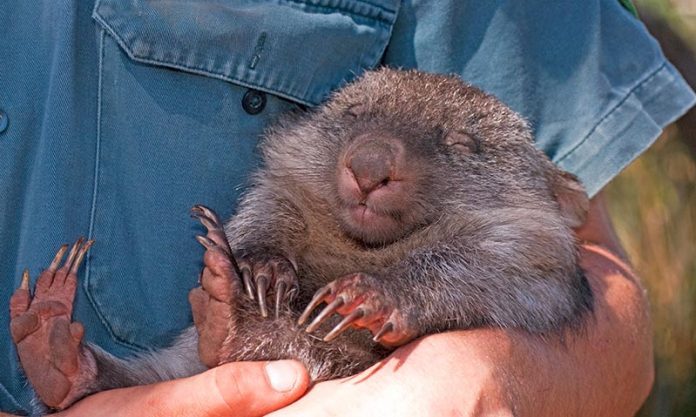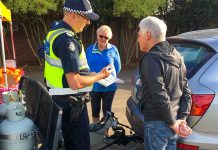The terrible Australian fires have devastated us all. Those of us lucky enough to have travelled this unique country have had the privilege of encountering native wildlife, and of visiting landscapes that have now been utterly destroyed by the fires.
RVers have been impacted, too, having to flee areas and to wonder where they can safely travel and camp. As things settle, we may also wonder what we can do to help.
Currently, there are state park, state forest reserves and national park closures across the country. You may not, and should not, enter these areas. However, as an RVer, you may come across heat-stressed or injured wildlife in other areas, or you may choose to look for heat-stressed or injured wildlife in areas you are permitted to safely access. Here is some information on what you can do to help:
BE PREPARED
Be familiar with the proper way to help wildlife until you can find professional rescue assistance. Many of the websites listed below include extensive information on what to do; for example, the NSW WIRES https://www.wires.org.au/wildlife-information Rescue Assistance page at the bottom includes rescue information for birds, koalas, microbats, possums, flying-fox, snakes, lizards and turtles, kangaroos and wallabies, monitor lizards, raptors and wombats.
The Kanyana Wildlife Glove Box Guide is an excellent document to print up and keep in your vehicle (along with the contact details in this document).
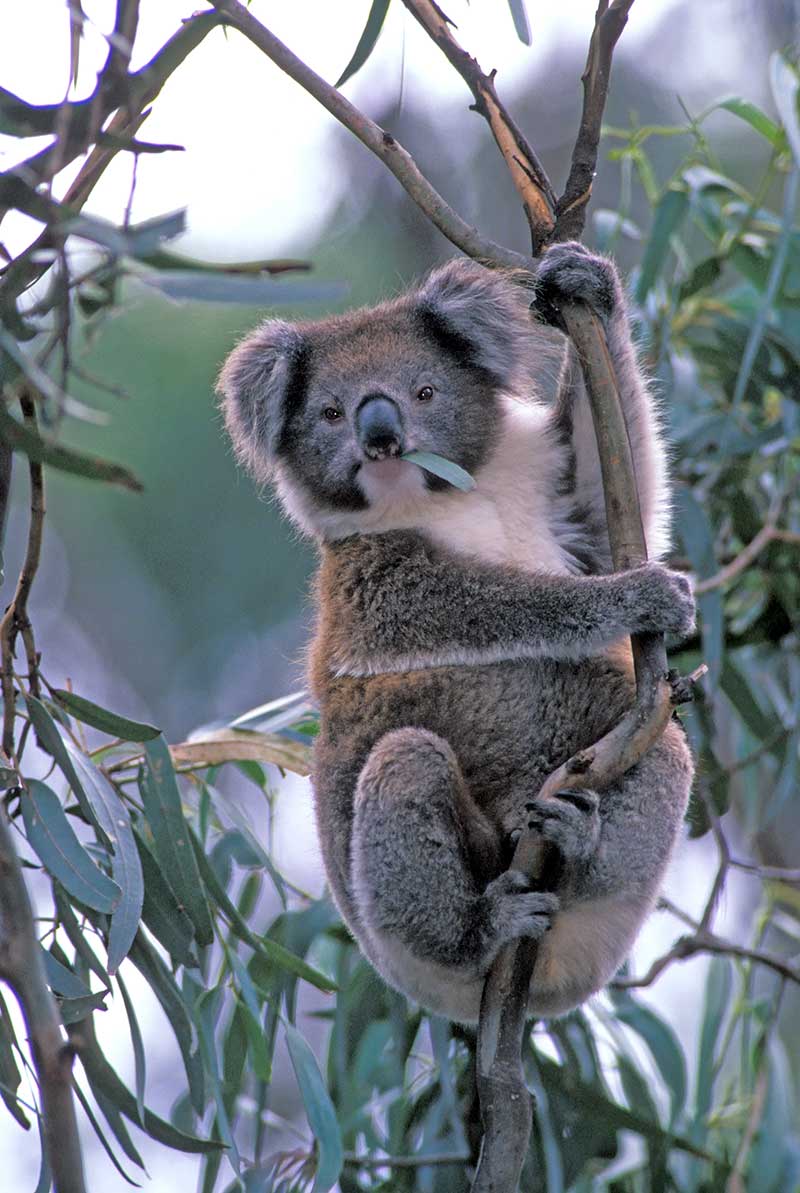
Be prepared. Keep some basic aids in your vehicle at all times. This includes towels to place over an animal so you can pick it up, pillow cases to put joeys in, ventilated cardboard boxes (collapsed with tape on hand), a torch, heavy gloves, poultry scissors, hand sanitiser, and non-toxic paint to mark an animal whose pouch has been checked (so others don’t have to re-check it).
OFFERING WATER
When you find a heat-stressed animal, do not give it food but you can gently offer it water. Some sources say injured animals should not be offered water, but some vets say they should.
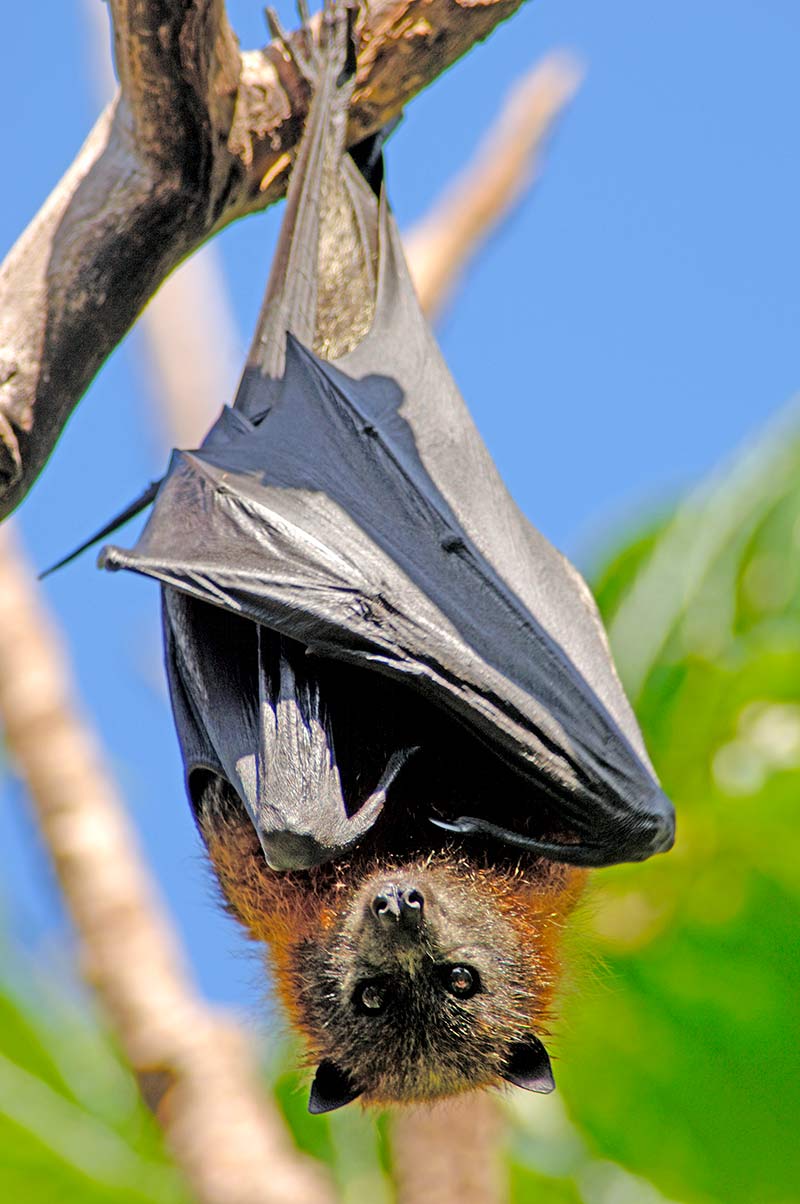
In any case, no food should be offered. We rescued a flying-fox from a barbed wire fence once (we had heavy gloves and plenty of experience) and when we offered it water, it literally grabbed for the bottle and desperately drank. Most of us have seen videos of koalas seeking water provided by people.
AUSTRALIAN FIRES: ANIMALS ON THE ROAD
If the animal is near or on the road, pull over if it is safe to do so and remove the animal from the road. This will prevent raptors feeding on the carcass and in turn becoming roadkill. Check the pouch of female marsupials and if the mother is dead, gently remove the joey and place it in a dark, warm place (a pillowcase and then a box lined with a towel).
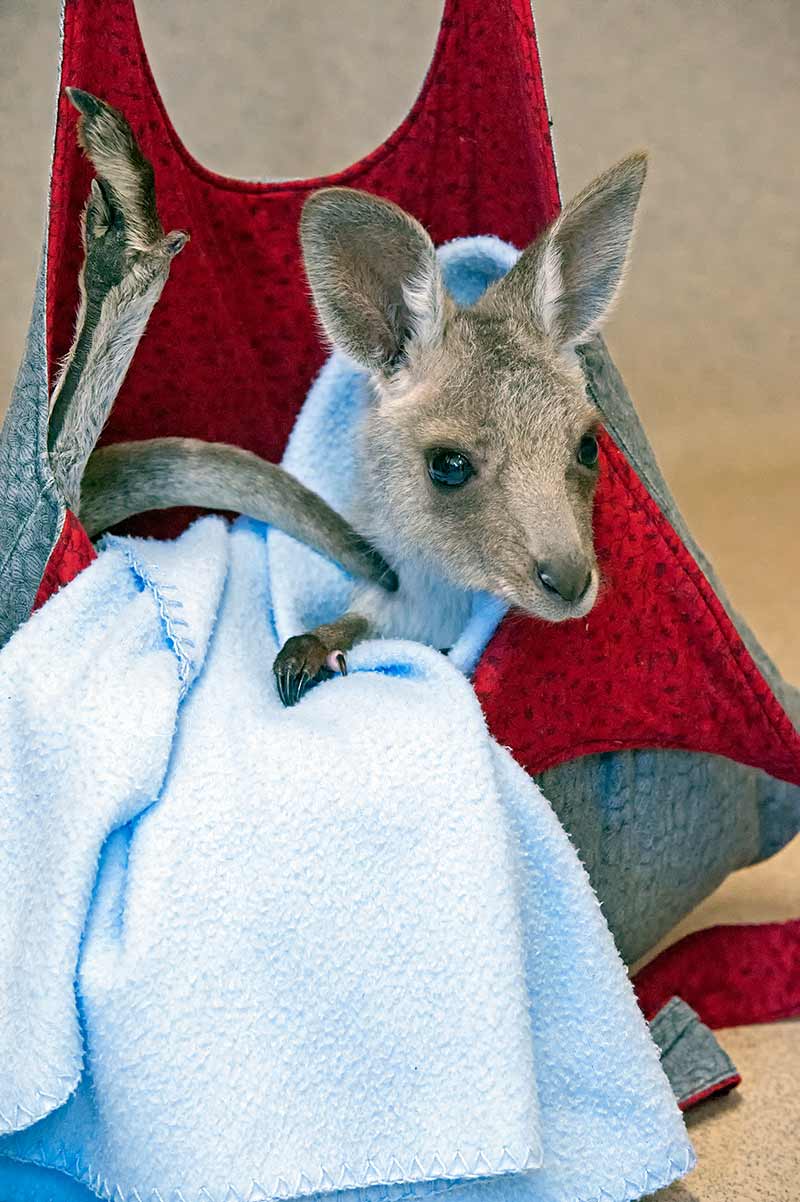
If the joey is on a teat, do not pull the joey off but rather cut the teat out with the joey still attached (not fun, but better than leaving the joey to die).
SNAKES
Do not handle snakes, monitors, or any species of bats or flying-fox unless you are an expert. Contact one of the numbers below for assistance and/or advice.
NOTE YOUR LOCATION
Make a note of exactly where you are if a carer or ranger is coming to help (or to euthanise an animal). This can include using your GPS to mark your location (latitude and longitude), taking note of a mile marker or a pole with a number on it, or even waiting for the help to arrive.
FINDING HELP
For wildlife rescue near wherever you might be, go to Fauna Search, www.fauna.org.au, and type your post code into the search box (with the magnifier icon). They have contact details for numerous regional carers.
If possible, transport the injured animal to the carer; most of them are so busy that taking the time to drive to a rescue is time away from other animals and duties.
IMPORTANT CONTACTS
For state wildlife rescue advice and help, the following assistance is available:
- New South Wales, WIRES: www.wires.org.au, 1300 094 737.
- Victoria, Wildlife Victoria: www.wildlifevictoria.org.au, (03) 8400 7300. Additionally, this government site has advice and carer information: https://www.wildlife.vic.gov.au/injured-native-wildlife/wildlife-tool.
- Queensland, RSPCA Queensland: www.rspcaqld.org.au, 1300 264 625.
- Northern Territory, Wildcare Northern Territory: https://nt.gov.au/environment/animals/report-injured-wildlife-or-rescue
- Darwin: 0408 885 341; Alice Springs: 0419 221 128; Katherine: 0412 955 336.
- South Australia, Fauna Rescue: www.faunarescue.org.au, (08) 8289 0896.
- Western Australia, Wildcare: www.dpaw.wa.gov.au/about-us/contact-us/wildcare-helpline (also see the page on Basic First Aid for Wildlife), (08) 9474 9055.
- Tasmania, Bonorong Sanctuary: www.bonorong.com.au, 0447 264 625.
- ACT, Environment ACT Access Canberra: www.accesscanberra.act.gov.au/app/answers/detail/a_id/1957/kw/report an injured kangaroo, 13 22 81 for injured kangaroos, adult wombats and snakes. For all other native wildlife, contact ACT Wildlife: www.actwildlife.net, 0432 300 033.
Many of these sites have information on what you can do to help; they are all in need of monetary donations, goods (for example), pouches (get those knitting needles out), cotton bedding, wildlife food, etc.
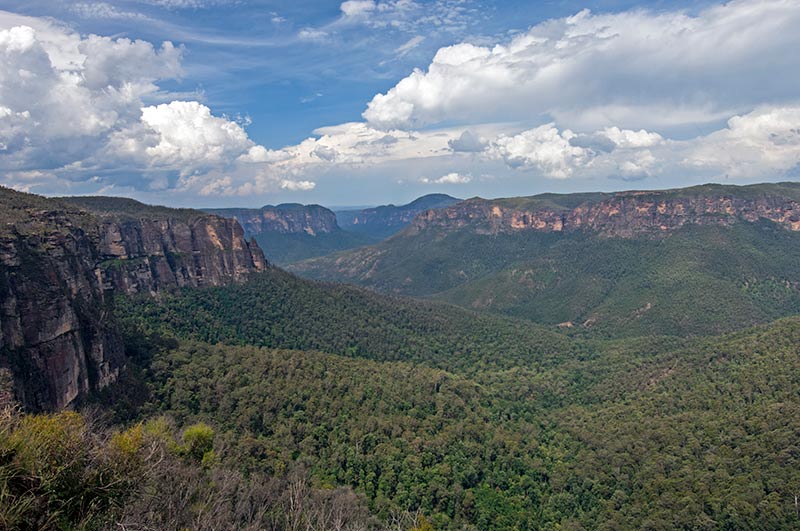
The impact on wildlife has been catastrophic, and soon, the task of restoring ecosystems will begin, and probably last a very long time.
It is tragic to think of forests filled with eucalyptus trees that once stood tall and are now burnt to the ground. While it is true that many eucalypts regenerate with fire, these fires have raged with such vigour that they may need help. What a perfect opportunity for we RVers to help.
For example:
- The Foundation for National Parks & Wildlife has a Plant a Tree for Me project that welcomes volunteers; contact them for details.
- Trees for Life offers workshops that will teach you the skills needed to become a volunteer with them.
- The Trillion Trees organisation in Western Australia is always seeking volunteers for various tree-planting projects.
- One Tree Planted plants trees around the world and is receiving donations that will allow it to buy seedlings in Australia to be planted when fire-affected areas are safe and the soil is able to accept those seedlings.
- You can donate money, but you can also donate your time. Sign up to become a Tree Ambassador and when the time is right, One Tree Planted will contact you to assist with tree plantings.
- The Koala Hospital in Port Macquarie has a ‘koala food’ tree planting project. You can donate funds to plant one or more trees; however, why not volunteer your services as a tree planter?
- The World Wildlife Fund’s Two Billion Trees project: how to help, how to get involved and how to work toward a healthier Australia (and planet).
- The Koala Clancy Foundation has tree-planting days in Victoria where weeds are removed and suitable ‘koala food’ trees are planted. If you own a rural property, the foundation can help you plant koala-friendly trees.
- Greening Australia has a number of tree-planting projects around the country; if its page on volunteering only presents courses it offers, phone to find out what the volunteer opportunities are.
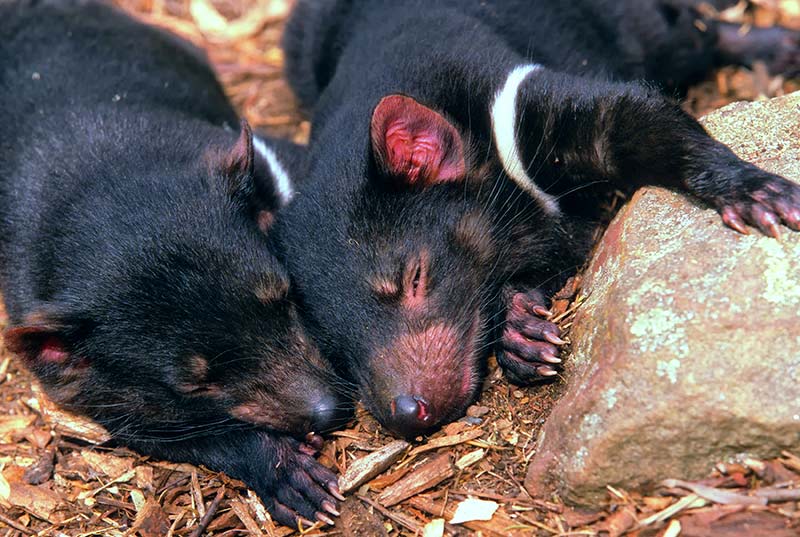
VOLUNTEERING
To volunteer in each state’s national parks (this can fit in well with the travelling lifestyle), check:
- NSW National Parks volunteering
- Parks Victoria volunteering
- National Parks & Wildlife Service South Australia volunteering
- Queensland Parks & Wildlife volunteering
- Northern Territory National Parks volunteering
- Western Australia Parks & Wildlife Service volunteering
- Tasmania Parks & Wildlife Service volunteering
PARK CLOSURES
To find national park, state park and state forest closures, visit:
- Forest Fire Management Victoria
- Forestry Corporation New South Wales
- Queensland Parks & Forests
- South Australia Parks & Wildlife
- Northern Territory Parks and navigate to ‘Check if a Park is Open’
- WA Parks & Wildlife Service
- Tasmania Parks & Wildlife
STATE EMERGENCY SERVICES
Finally, here is information on state emergency services:
- New South Wales Rural Fire Service: https://www.rfs.nsw.gov.au/
- Emergency Western Australia: https://www.emergency.wa.gov.au/
- South Australia Country Fire Service: https://www.cfs.sa.gov.au/site/home.jsp
- Victoria Country Fire Authority: http://emergency.vic.gov.au/respond/
- Queensland Fire and Emergency Services: https://www.qfes.qld.gov.au/Pages/default.aspx
- Northern Territory Fire and Rescue Services: https://pfes.nt.gov.au/fire-and-rescue-service
- Tasmania State Emergency Service https://www.ses.tas.gov.au/
Stay safe. Let us all mend our broken hearts by helping to mend Australia and its wildlife in some way, in any way, no matter how small.
Thank you from everyone at GoRV, and from Linda and Steve.
– Images: Steven David Miller, Natural Wanders


